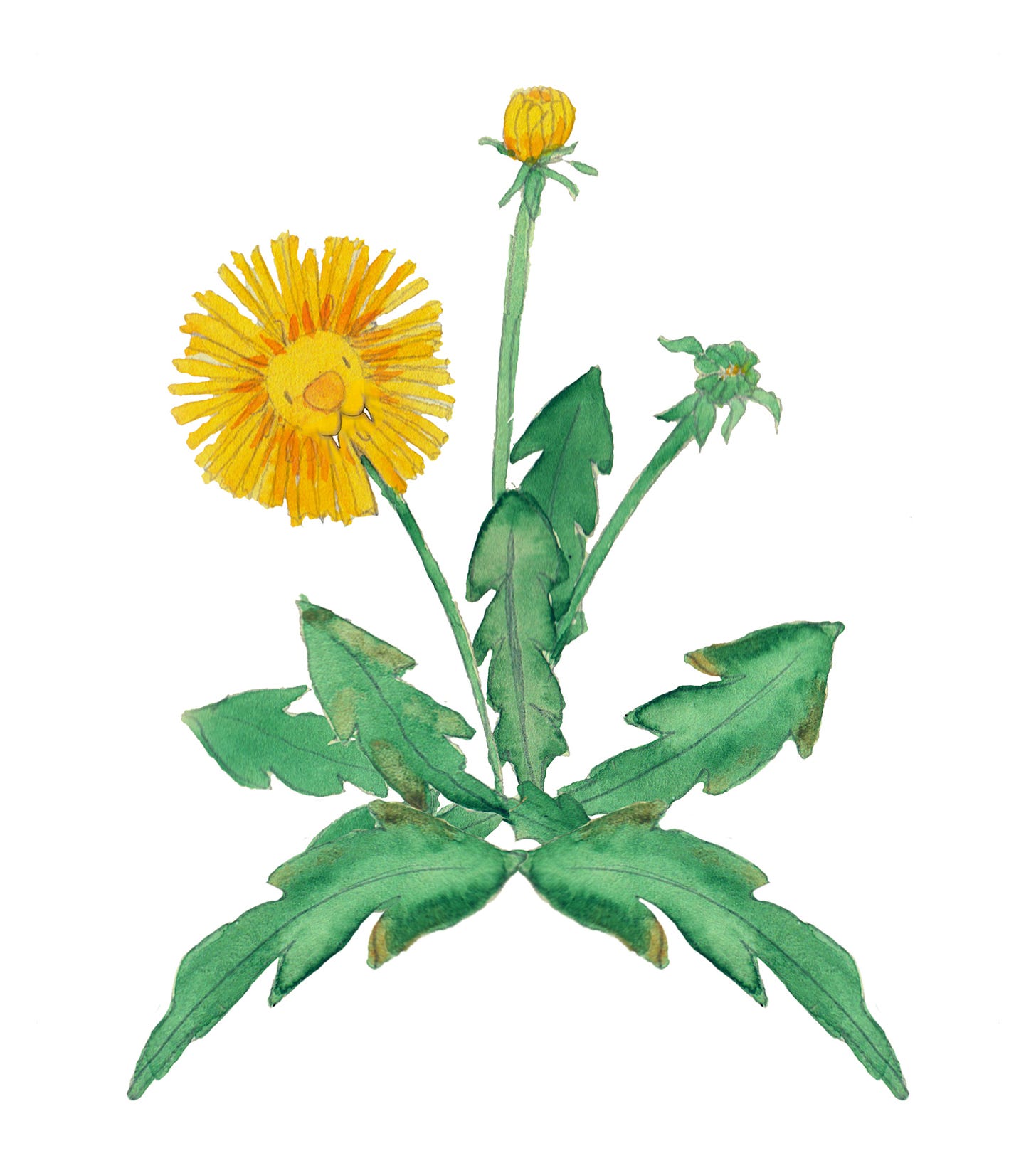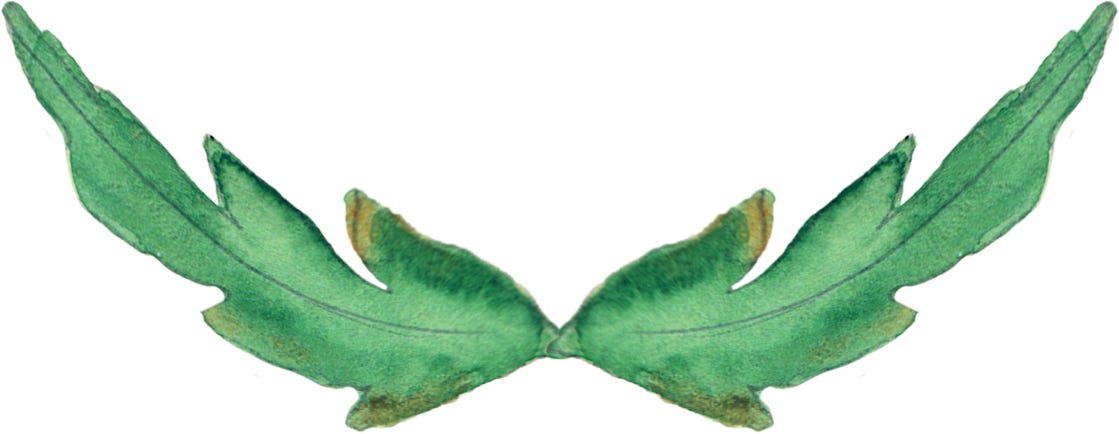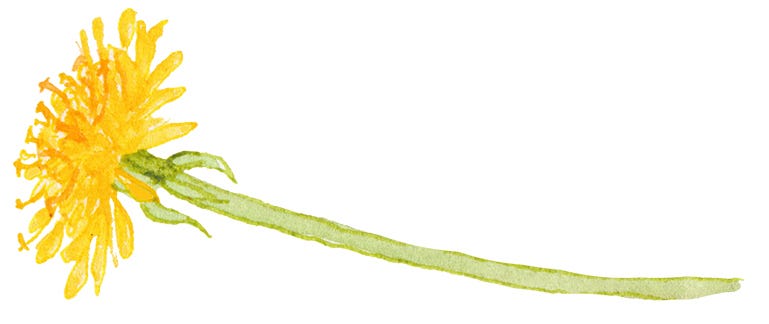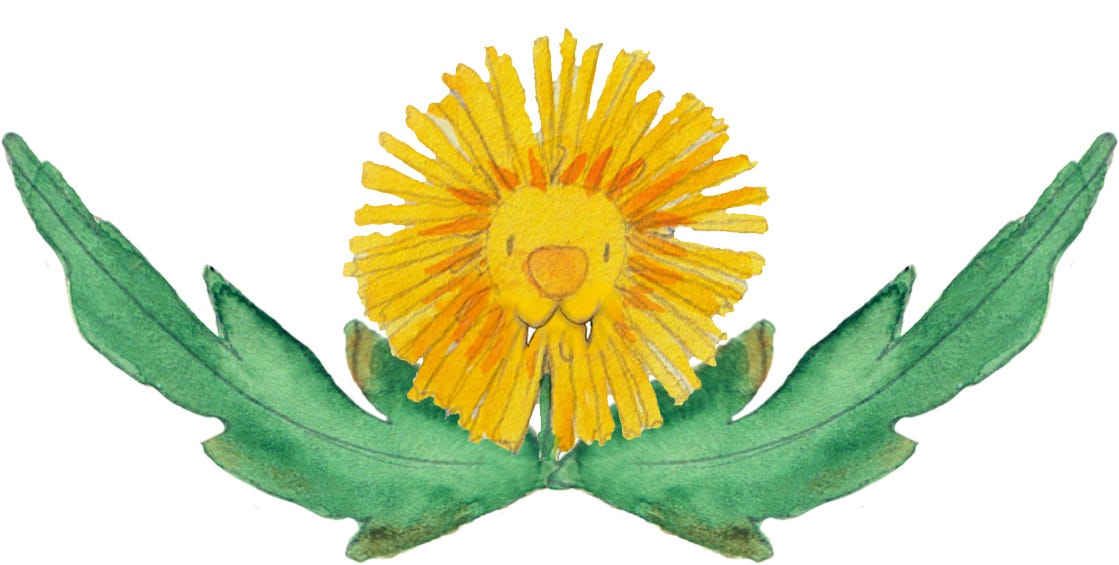Dandelion
Taraxacum Officinale
It was all a misunderstanding.
In the 15th century Master Wilhelmus, a German surgeon, was so impressed with the dandelion's strong healing powers in fighting inflammation, he wrote:
"eynem lewen zan, genannt zu latin Dens leonis"
(it's like a lion's tooth, called in Latin Dens Leonis)
Or Dente-de-Lion in French.
It was this name that was used in the "Hortus Sanitatis", an encyclopaedia from 1491. Then again in 1537 in the "Contrafayt Kreuterbuch", a botanical book, where the text was illustrated with a dandelion with leaves shaped like lion's teeth. But the funny thing is that no part of the plant looks anything like a lion's tooth. In spite of this, the name stuck.
Although the word Dandelion comes from French, in France, the word for Dandelion is pissenlit which means 'pee in bed'. It's true: eating Dandelion leaves makes you pee, it’s a diuretic. This also resulted in an old English belief that, if you pick a dandelion, you'd wet your bed at night.
The first reference to the name Dandelion was in 1485.
The word Taraxacum could possibly be from the Greek word ‘taraxa’ (‘I have caused’) and achos (‘pain’), because of the medicinal effects of dandelions. Others think that Taraxacum stems from ‘taraxus’, Greek for eye disease and ‘akeomal’, Greek for cure. Medieval physicians mention an eye disease for which they used dandelions as a cure. A final theory is that Taraxum is from ‘taraxos’ the Greek word for ‘chaos’ and ‘aka’ which means ‘remedy’.
The word Officinale is from the Latin word Officium and means ‘in service of’. Plants that have the word Officinale in their names are plants in service of science.
Young Dandelion leaves are great and healthy in spring and summer salads. They taste slightly peppery.
And there are many, many other names for dandelions, here are but a few: Blowball, Cankerwort, Crow-parsnip, Dindle, Doonhead-clock, Fortune Teller, Horse Gowan, Irish Daisy, Lion's Tooth, Male, Milk, Pee-a-bed, Pissabed, Priest's Crown, Puffball, Stink Davie, Swine's Snout, Wild Endive, Witch Gowan, Witches’ Milk and Yellow Gowan. (Reference: Compendium of Symbolic and ritual plants in Europe, by Marcel de Clene and Marie Claire de Jeune)
This newsletter is NOT a field guide for flower identification. It’s often difficult to tell the difference between harmless plants and poisonous plants and some flowers are rare and protected by law, so, NEVER pick or use any plants or flowers if you’re not sure about them.
illustrations ©Chantal Bourgonje










